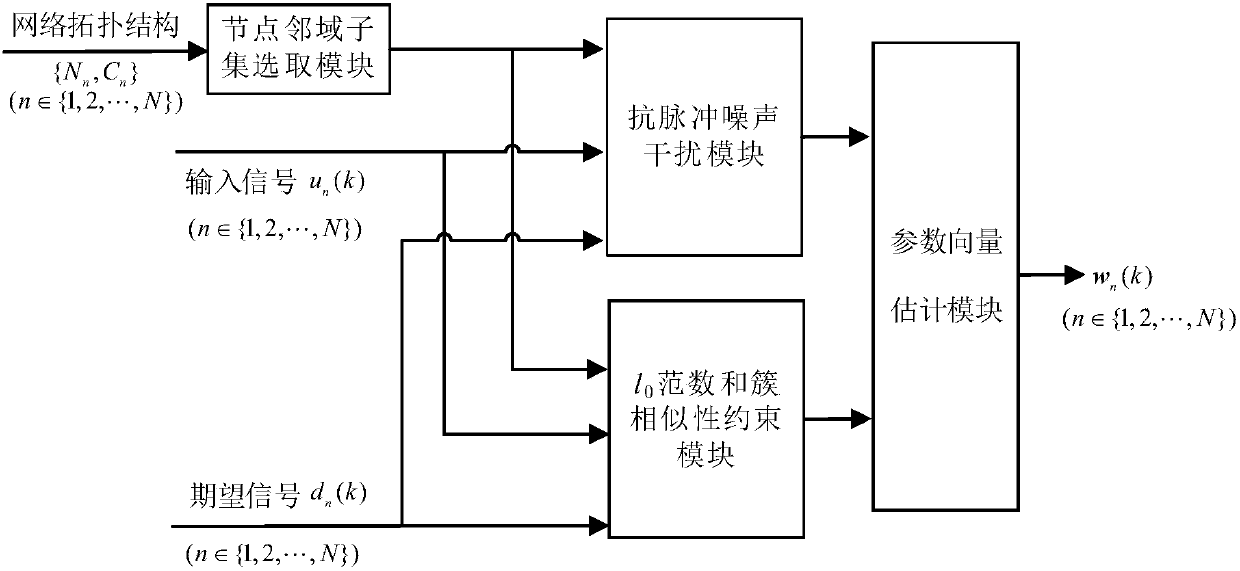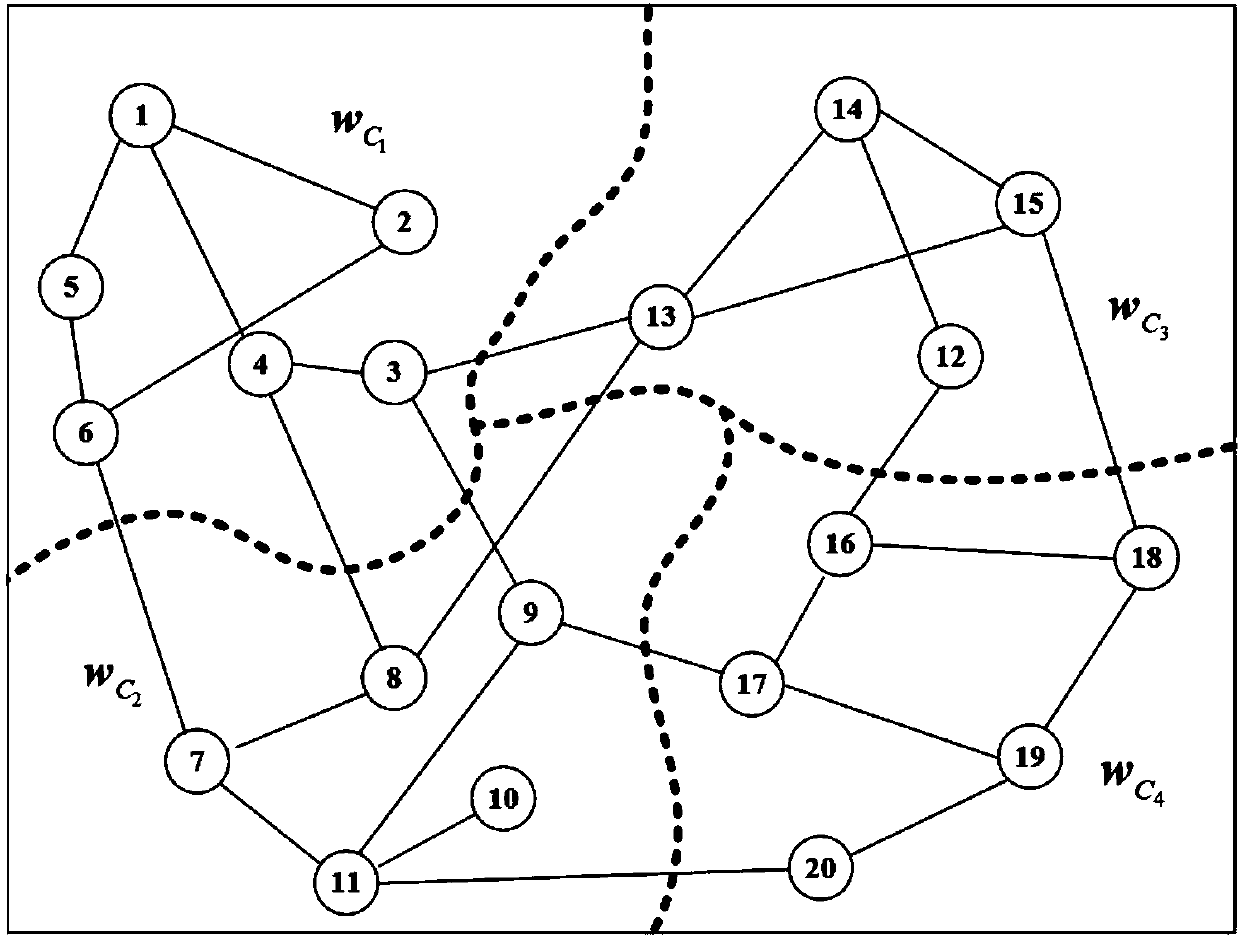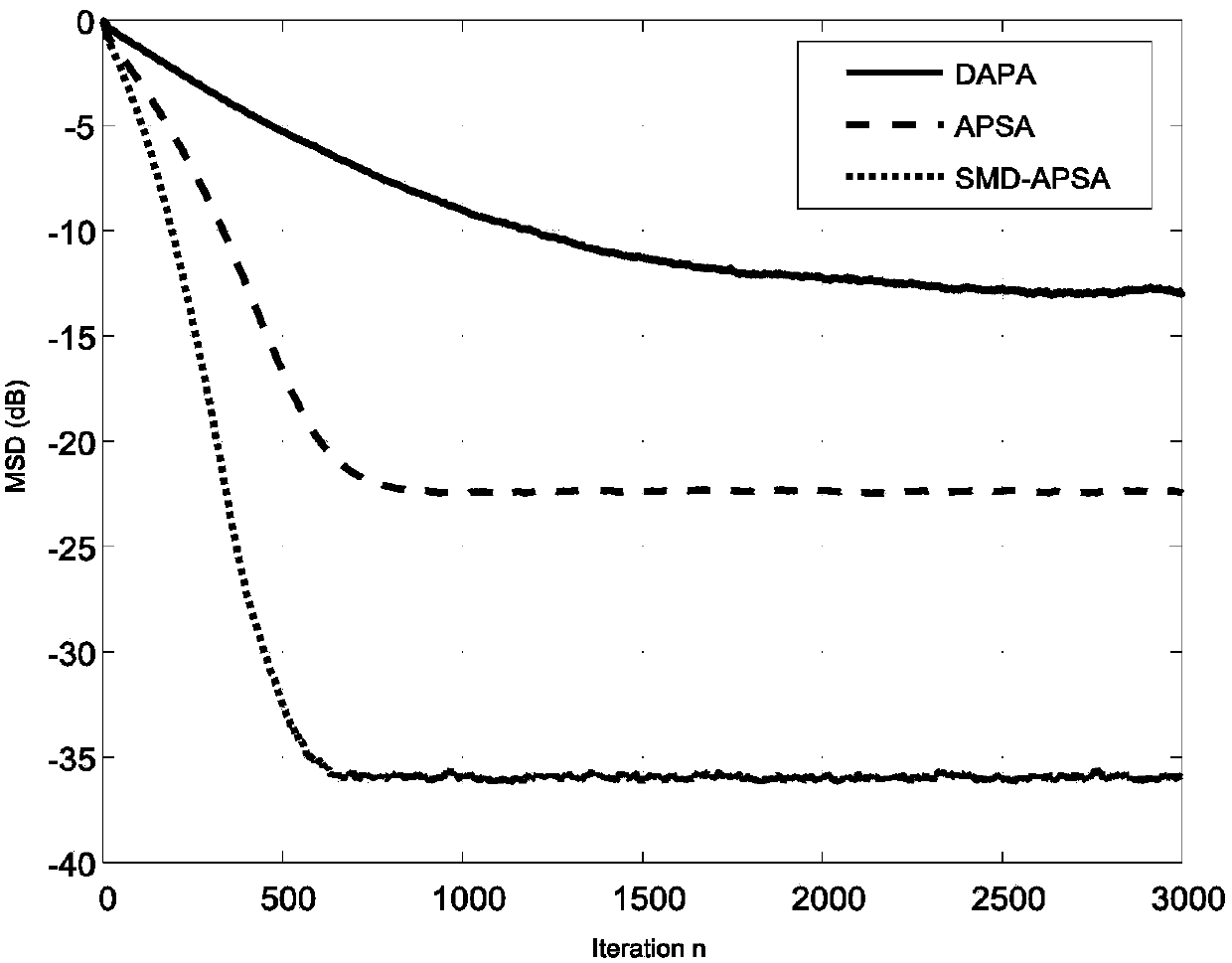Robust sparse multitask self-adaptation system and iteration method
An adaptive system and adaptive iterative technology, applied in adaptive control, transmission systems, digital transmission systems, etc., can solve the problems of slow convergence of DLMS and DAPSA, and achieve good convergence performance, high stability, and reduced impact. Effect
- Summary
- Abstract
- Description
- Claims
- Application Information
AI Technical Summary
Problems solved by technology
Method used
Image
Examples
Embodiment Construction
[0043] In order to make the object, technical solution and advantages of the present invention clearer, the present invention will be further described in detail below in combination with specific embodiments and with reference to the accompanying drawings. It should be understood that these descriptions are exemplary only, and are not intended to limit the scope of the present invention. Also, in the following description, descriptions of well-known structures and techniques are omitted to avoid unnecessarily obscuring the concept of the present invention.
[0044] Such as figure 1 As shown, a robust sparse multi-task adaptive system, abbreviated as SMD-APSA, adopts multi-task topology, anti-impulse noise interference, l 0 Norm and cluster similarity constraints and parameter vector estimation are used to update the weight coefficient vectors of each node of the adaptive system, thereby improving the performance of the adaptive system.
[0045] Contains the following steps:...
PUM
 Login to view more
Login to view more Abstract
Description
Claims
Application Information
 Login to view more
Login to view more - R&D Engineer
- R&D Manager
- IP Professional
- Industry Leading Data Capabilities
- Powerful AI technology
- Patent DNA Extraction
Browse by: Latest US Patents, China's latest patents, Technical Efficacy Thesaurus, Application Domain, Technology Topic.
© 2024 PatSnap. All rights reserved.Legal|Privacy policy|Modern Slavery Act Transparency Statement|Sitemap



